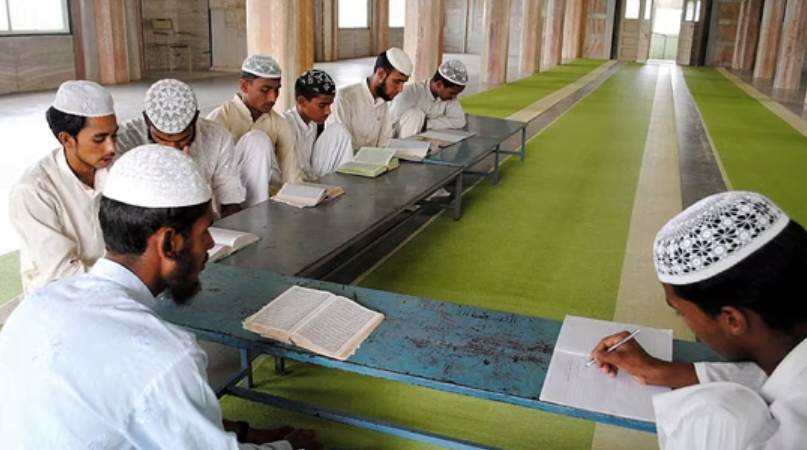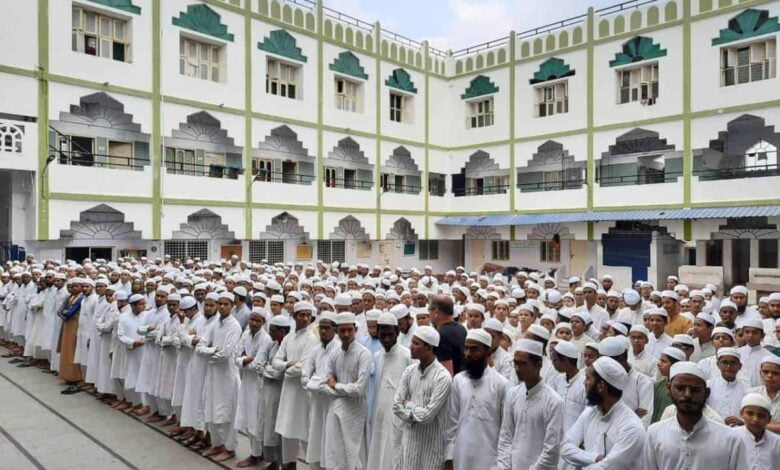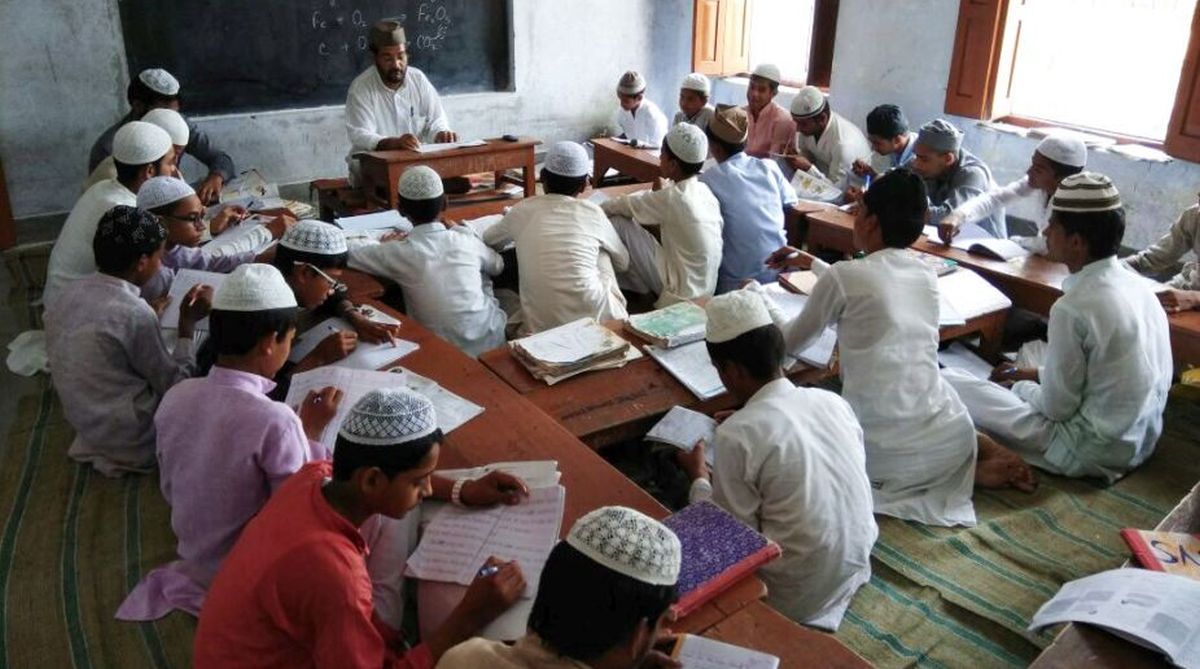The High Court’s decision was made in response to a writ case brought by Anshuman Singh Rathore, in which he contested the jurisdiction of the UP Madrasa Board and objected to the management of Madrasa by the Minority Welfare Department, as well as other related matters, by the State and Union governments.
The Allahabad High Court issued its verdict on the ban on UP madrasas
Over 16000 recognised and 8,000 unrecognised madrassas were uncertain due to the Allahabad High Court’s verdict that a crucial act controlling madrassas is unlawful, which could harm the better functioning of Madrasas.

The future of almost 10,000 madrasa teachers and over 26 lakh students was uncertain due to the verdict, according to those impacted by it. The madrassas were expected to close following the court’s decision. It was instructed to provide accommodations for the students enrolled in traditional schools, a crucial directive, perhaps affecting thousands of students’ lives in the state with the largest population in India.
A report by NDTV says, there are around 16,513 recognised Madrasas, out of which 560 are aided by the government, and over 8,400 unrecognised madrasas present in UP.
The High Court previously urged the Adityanath government to take “immediate steps” to accommodate the growing number of madrasa students in regular state schools at the elementary, secondary, and intermediate levels. On March 22nd, ruling Justices Vivek Chaudhary and Subhash Vidyarthi recommended this to the Adityanath government. The court has stated that adequate more seats must be created, and if necessary, sufficient new schools should be founded to accommodate these students. Later, the Madrasa Association stated that they would fight the HC verdict and seek intervention from the Supreme Court.
According to the High Court’s Verdict, “The state has no power to form a board of religious education or to establish a board of school education solely for a particular religion and related philosophy and at the same time, It cannot discriminate against children of different religions and provide them with different types of education. Secularism, the cornerstone of the Indian constitution, would be violated by any such action on the part of the government.” The bench stated in the 86-page order.
The state madrasa board claims that the verdict will affect the approximately 200,000 students now enrolled in 16,500 recognised and 8,500 unrecognised madrassas or Islamic seminaries throughout Uttar Pradesh. Muslims account for 19.26 per cent of Uttar Pradesh‘s 190 million people.
Concerns surrounding the madrasas’ ban
“The budget for aided madrasas is 900 crore. Where will these student go? To which schools will they be transferred? If this order is carried out, I am also concerned about the destiny of 10,000 teachers and their families,” said Iftikhar Ahmed Javed, head of the Uttar Pradesh Madrasa Education Board.

According to a report by The Wire, the High Court’s verdict has put madrassa professors and students in a precarious situation. The 36-year-old Balrampur madrassa instructor Fayaz Ahmad Misbahi, who has been employed for nine years, is concerned that hundreds of other teachers may lose their employment as a result of the High Court’s ruling. Concerns were also raised by the court’s lack of response on the future of educators. Misbahi claimed that although the High Court had discussed the teachers’ rehabilitation, it had mentioned nothing about the kids’. “How about the educators? They won’t get paid or have a job,” he asked.
Khan posed the same query. He inquired about “what will happen to the government land and big building complexes of these madrassas,” as well as how the state intended to carry out the order to quickly transfer the madrassa kids to regular schools.
The government may have been ordered by the court to change the portions of the Madrasa Act 2004 that it deems unconstitutional, according to Misbahi, who is also the zonal coordinator of Madaris Arabia, UP, a teachers’ organisation in the Devipatan area. He questioned, “How will the government manage to accommodate madrasa students and give them a good education, when it is already having trouble serving regular students? We give youngsters free education at madrassas, coupled with food and medical care. Our intention is not to educate. We have been using NCERT books and following that syllabus for teaching since 2018, The Adityanath government gave its approval in 2018 for the state’s madrassa board to begin using NCERT books in Hindi, Urdu, and English.” Misbahi said in a The Wire report.
The UP Madrasa board made a plea to the SC
A split bench of the High Court declared the Act unconstitutional, stating that the “denial” of contemporary education and the quality of education in madrassas violates constitutional principles demanding free and mandatory education for all children aged 6 to 14 years.
While students of other religions receive education in all modern disciplines, the Madrasa Board’s denial of equal quality violates both Article 21-A and Article 21 of the Indian Constitution. The HC declared, “The state cannot abscond with this flimsy justification that it fulfils its obligation by offering traditional education at a cheap cost.” Therefore, the UP Madrasa board made a plea to the Supreme Court covering the whole matter.
Guidelines on the ban of UP madrasas from the SC
A bench headed by Chief Justice of India DY Chandrachud said the high court judgment was prima facie not correct and issued notice to the UP & central governments and the Madrasa Board.

The High Court ordered the Madrasa Board and the Adityanath Government to accept responsibility for the 2,00,000 students who will be negatively impacted by the verdict, but last month, the court characterised the entire issue as a “Violation of Secularism” that falls under the Madrasa Act 2004.
As stated by the Supreme Court on Friday (5th April), “The Madrasa Board aims and purposes are purely regulatory, and the board’s creation will not affect secularism. The High Court directed the transfer of the students while quashing the provisions of the Act. This will benefit 17 lakh students. We believe that the direction to transfer the students to other schools was not appropriate,” said the Chief Justice.
“Repeating the Madrasa Act of 2004’s provisions would not be the solution if the PIL’s goal was to guarantee that the madrasas impart secular education in core subjects like mathematics, science, history, and languages,” said the Supreme Court.
The state and centre governments agreed with the Supreme Court’s decision and suggested that a discussion about the questionable integration of religion and other pertinent matters should take place.
A representative for the madrassas, senior counsel Abhishek Manu Singhvi, claimed that religious education cannot imply religious education and that 10,000 madrassa teachers and 17 lakh students will be left out in the cold by the high court’s Judgement. The state administration, however, claims to have made plans for educators and children. Saying that madrassa education lacks quality, universality, and breadth of instruction is incorrect, according to Mr. Singhvi. In Aruna Roy v. Union of India (2002), the Supreme Court declared that banning madrassas based on their specificity is discriminatory, as he brought up.
The Chief Justice stated that the matters brought up should be carefully thought through and scheduled a follow-up hearing for the second week of July.
About the author(s)
Sumaiya Sayeed is an adaptable independent writer and translator (subtitler) who has a love for creating engaging content for a range of markets. Sumaiya is a freelance writer with a background in Communicative English. She specialises in producing captivating blog posts, articles, and content that draws readers in. she is capable of producing excellent work on schedule. When she's not pounding away at a keyboard, she likes to try out new hobbies to keep her skills sharp. Her hobbies include attending film festivals and film screening, writing screenplays, reading and street photography.






